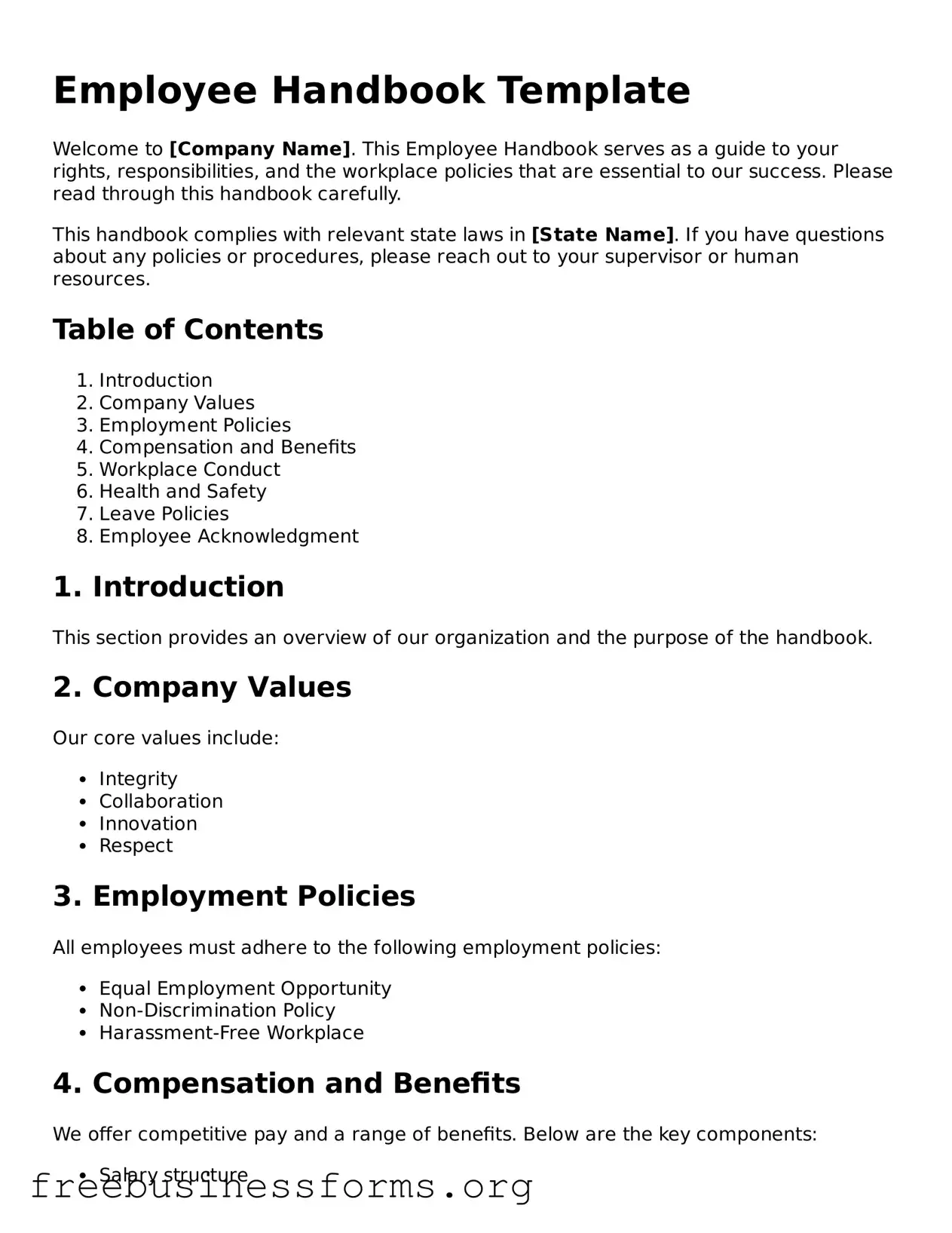Employee Handbook Template
Welcome to [Company Name]. This Employee Handbook serves as a guide to your rights, responsibilities, and the workplace policies that are essential to our success. Please read through this handbook carefully.
This handbook complies with relevant state laws in [State Name]. If you have questions about any policies or procedures, please reach out to your supervisor or human resources.
Table of Contents
- Introduction
- Company Values
- Employment Policies
- Compensation and Benefits
- Workplace Conduct
- Health and Safety
- Leave Policies
- Employee Acknowledgment
1. Introduction
This section provides an overview of our organization and the purpose of the handbook.
2. Company Values
Our core values include:
- Integrity
- Collaboration
- Innovation
- Respect
3. Employment Policies
All employees must adhere to the following employment policies:
- Equal Employment Opportunity
- Non-Discrimination Policy
- Harassment-Free Workplace
4. Compensation and Benefits
We offer competitive pay and a range of benefits. Below are the key components:
- Salary structure
- Health insurance
- Retirement plans
- Paid time off
5. Workplace Conduct
Employees are expected to maintain professionalism and respect. The following behaviors are prohibited:
- Substance abuse
- Disruptive behavior
- Disrespectful communication
6. Health and Safety
Your safety is our priority. Please familiarize yourself with workplace safety protocols and emergency procedures.
7. Leave Policies
Employees are entitled to various types of leave, including:
- Sick leave
- Family and medical leave
- Vacation time
8. Employee Acknowledgment
By signing below, you acknowledge that you have received, read, and understood this Employee Handbook.
Employee Name: ______________________
Employee Signature: ______________________
Date: ______________________
